- Home
- Encyclopedia
- Bub Meeks and a Wild Bunch Winchester
Bub Meeks and a Wild Bunch Winchester
In the collection of the Sweetwater County Historical Museum in Green River, Wyo., is a unique rifle, a lever-action Winchester Model 1894 carbine chambered for the .25/35 cartridge. Manufactured in 1910, its receiver is clearly—if crudely—stamped with an inscription:
GUN LOST IN "LITTLE BROWNS HOLE"
BY ONE OF BUTCH CASSIDY MEN
FOUND BY JOE DAVENPORT

Brown's Hole, now Brown's Park, straddles the Utah-Colorado line just south of the Wyoming border, and was a favorite haunt of late 19th and early 20th century outlaws. Other haunts included the Hole in the Wall in Johnson County, Wyo., and Robber's Roost in southeast Utah. Some of the best-known outlaws were Butch Cassidy (born Robert Leroy Parker in 1866), the Sundance Kid (Harry Longabaugh), “Kid Curry” and “Flat-Nose Curry,” (Harvey Logan and George Currie), William “News” Carver, Elzy Lay and the “Tall Texan” (Ben Kilpatrick). These men formed the loose network that came to be known variously as the Hole in the Wall Gang or the Wild Bunch.
Joe Davenport was a deputy sheriff in Moffat County, Colo., and Sweetwater County, Wyo. and, for many years, an officer with the police department in Rock Springs, Wyo. His family ranched in the Aspen Mountain area south of Rock Springs, and operated the Willow Creek Ranch in the Brown’s Hole country in the northwest corner of Colorado. It was rough country in a rough time: In 1898 Davenport was a member of the posse that captured Harry Tracy, a vicious killer who had escaped from the penitentiary in Utah.
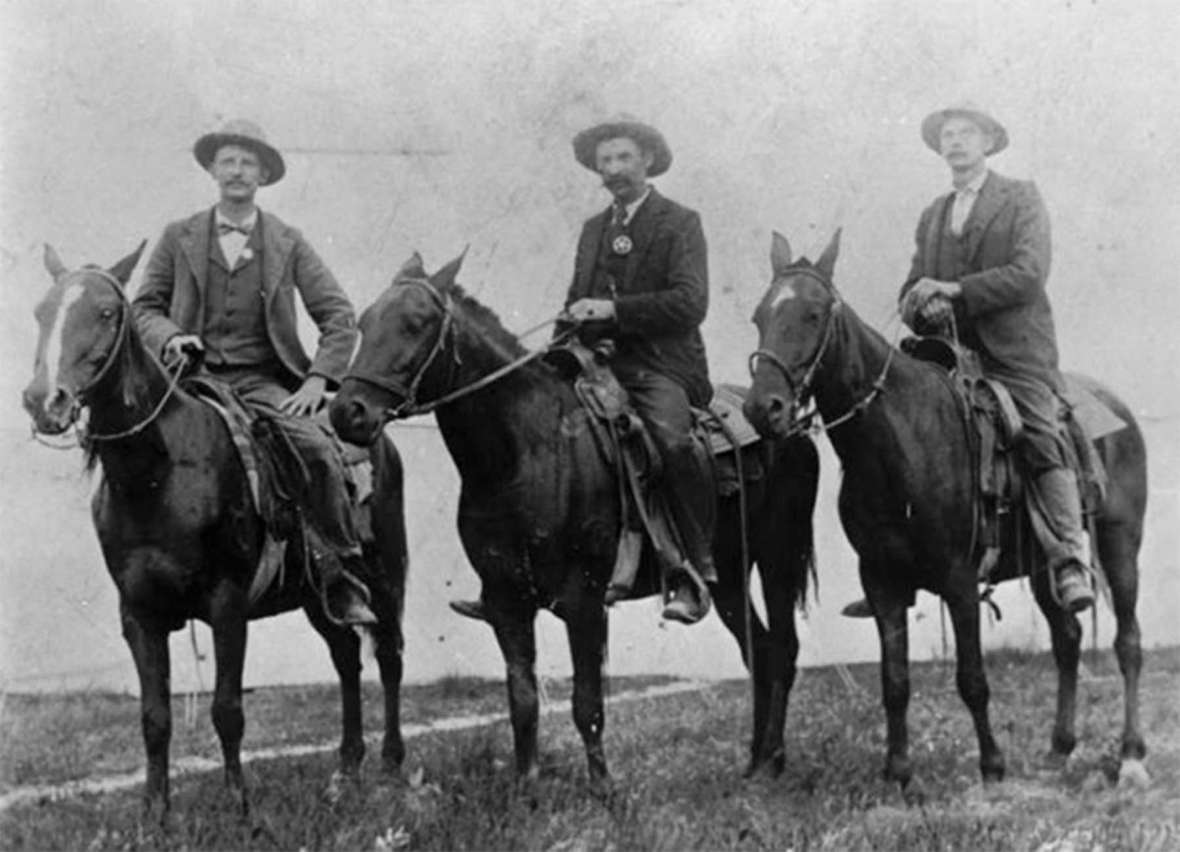
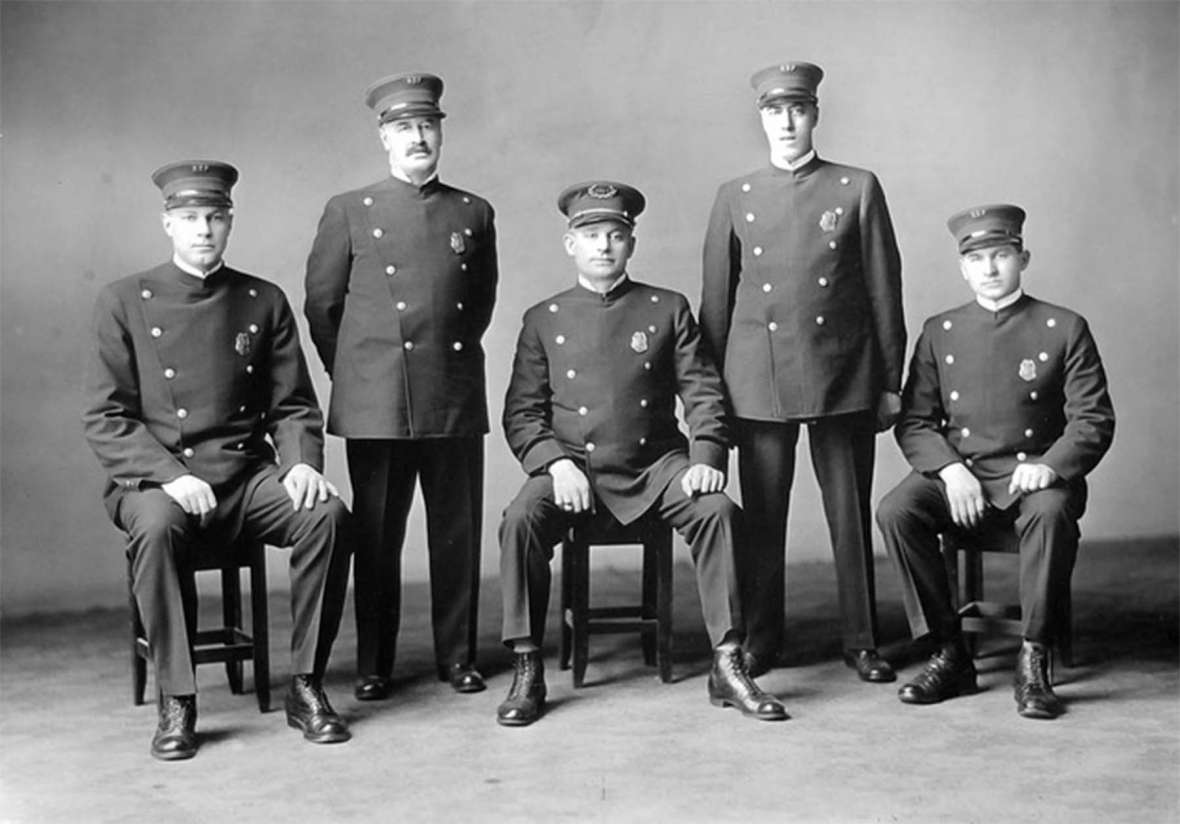
The Winchester carbine is believed by staff of the Sweetwater County Museum in Green River, Wyo., to have belonged to a lesser-known associate of Cassidy's, a young rancher-rustler named Henry Rhodes "Bub" Meeks, born in Provo, Utah, in 1869. On Aug. 13, 1896, Cassidy, Elzy Lay and Meeks robbed the Bank of Montpelier, in Montpelier, Idaho. Cassidy needed money to hire lawyers for a criminal comrade named Matt Warner, who was soon to be tried for killing two men in the Uinta Mountains north of Vernal, Utah. But Cassidy was broke; in the summer of 1896 he’d been out less than a year from the Wyoming State Prison in Laramie, where he’d served 18 months for possession of a stolen horse.

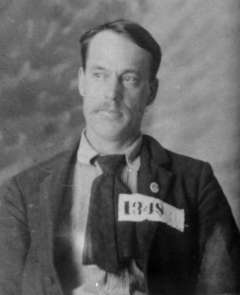
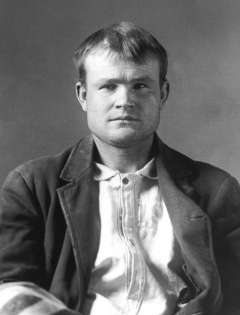
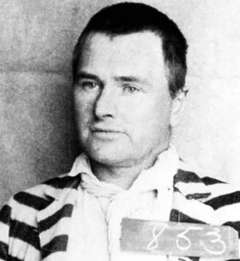
|
Apparently Cassidy and his associates decided to rob a bank to provide the funds. News reports at the time claimed they considered banks in Evanston, Wyo., and Logan, Utah. But the Montpelier bank made sense for escape; Montpelier was only 30-odd miles from the Utah state line and half that distance from Wyoming, at a time when state boundaries could create serious jurisdictional problems for posses.
The holdup was a success and the trio netted over $7,000—around $225,000 in 2021 currency. Two days later, the Montpelier Examiner reported:
“On Thursday afternoon, at 3:30 o’clock, while the citizens of Montpelier were quietly engaged in their usual daily avocations, three men, none of them masked, rode quietly down Washington Street to the Bank of Montpelier and dismounted. Cashier Gray and Ed. Hoover were standing in front of the building talking. One of the men invited them inside at the same drawing a six-shooter. They did as directed, and when inside were told to stand with their faces to the wall and hands up. Two more men who happened to pass the bank door were also ordered in. Then one of the robbers went around behind the counter and held up Bud McIntosh, the assistant cashier, taking all of the money in sight and dumping it into a sack. Bud refused to tell where the greenbacks were and the man inside hit him over the eye with a gun. After ransacking the bank vault they went out, mounted their horses and rode off.
“The alarm spread quickly, and Deputy Cruikshank and Attorney Bagley were soon on the trail closely followed by Sheriff Davis when the robbery occurred, and a large posse.
“The robbers took the Canyon Road leading to Thomas’ Fork. When several miles away they changed horses and, crossing Thomas’ Creek, took to the mountains.”
The robber who pistol-whipped McIntosh was Cassidy. Inside the bank with him was Bub Meeks; Elzy Lay remained outside with the horses. The three fled east up Montpelier Canyon to their first fresh horse relay on Montpelier Pass. Pre-arranged fresh horses along a planned escape route were a Cassidy trademark, and a wise one. The pursuing posse, led by Bear Lake County Sheriff M. Jeff Davis, was soon outdistanced, and the three gunmen escaped into Wyoming, then south to Brown’s Hole.
Matt Warner’s murder trial opened in Vernal Utah, on Sept. 8, 1896. The very next day, Sept. 9, the Salt Lake Herald ran a front-page story that not only identified Cassidy (misspelled “Cassady,”) Lay and Meeks as the men who had committed the Montpelier robbery, but claimed that the money taken was being used to fund Warner’s defense team, which included Douglas Preston of Rock Springs, Orlando Powers and D.N. Straup of Salt Lake City and F.L. Luther of Vernal, all top lawyers. The charge was hotly denied and a lawsuit threatened, and the story died away. The strategy, however, seemed to work: Warner’s charges were reduced from murder to voluntary manslaughter and he was sentenced to a prison term of five years, of which he served only three.
Though Cassidy and Meeks were reportedly seen together in Loa, Utah, in September of 1896, they most likely parted company thereafter. Eight months later, on June 15, 1897, Meeks surfaced in Fort Bridger, Wyo., where he, his brother William (Billy) Meeks and an accomplice named Henry Lea robbed the Charles Guild & Sons store of $600, including the store’s post office funds. The holdup was a botch and the three were soon in custody; Meeks was arrested by Uinta (Wyo.) County Deputy Sheriff Bob Calverly.
Identified by cashier McIntosh from the Montpelier robbery, and later by several other witnesses, Meeks was swiftly charged and brought to trial on that crime in Paris, Idaho, the Bear Lake County seat, before Judge Drew W. Standrod. It was during the trial that Meeks began exhibiting the erratic behavior that would characterize his remaining years. He was twice charged with contempt for “hurling indignities at the judge.” Found guilty of the holdup, he was sentenced by Judge Standrod to 35 years in the state penitentiary, a severe penalty by anyone’s standards. Considered an escape risk, when Meeks was transported to the Idaho State Penitentiary in Boise, he was placed under heavy guard and fitted with a device called an “Oregon Boot,” a 25-pound steel weight shaped like a doughnut, locked around his ankle.
In prison Meeks was assigned inmate number 574. Four years later, in October of 1901, his sentence was reduced to 12 years.
Contingent upon good behavior, he would have been eligible for parole in late 1904, but only two months later, on Christmas Eve 1901, due either to impatience or a deteriorating mental condition, he attempted his first escape. Assigned to a work party at the prison’s hog pen, Meeks distracted a wagon driver, unhitched his horse, Old Selam, from the wagon, jumped on and rode off, harness and all. As described in the prison’s report of the escape, he “went up the hill road by the reservoir and turning to the left ‘lit’ out for the mountains.” Not difficult to track, he was captured the next day.
Meeks’s escape attempt extended his sentence an additional 12 years and he was locked away for two months in solitary confinement. His health, never good, continued to worsen under the harsh conditions at the prison. In the spring of 1902 he attempted a second escape and was shot in the left leg by a prison guard. He was taken to St. Alphonsus Hospital in Boise, where doctors were obliged to amputate. He was released from the hospital in March of 1903, but only a matter of days after his return to the prison, he attempted suicide by jumping off a cell house wall, badly injuring his right arm and shoulder.
By April 1903, Meeks had not only tried to escape twice, but had attempted suicide a total of three times. Penitentiary officials decided to act, and on April 22, 1903, the Idaho Daily Statesman reported,
“‘BOB’ [sic] MEEKS ADJUDGED INSANE
“Montpelier Bank Robber Will be Committed
to the Blackfoot Asylum
“IS AFFLICTED WITH A MANIA FOR SUICIDE
“Made two attempts to break jail and Three Times tried to take his
Own life - Is Now a Miserable Cripple Requiring Constant Attention.
“‘Bob [sic] Meeks, the Montpelier bank robber, has been adjudged insane and will be committed to the asylum at Blackfoot as soon as the services of an attendant can be procured.

“Dr. George Collinter, the prison physician, swore to a complaint yesterday charging Meeks with insanity and the examination of the convict was conducted by Doctors C. L. Sweet and J. K. Dubois before Probate Judge W. Brown in the office of Warden Purrin.
“It was shown that Meeks was afficted [sic] with suicidal mania and otherwise out of mental balance.
“His removal from the penitentiary will relieve the prison authorities of a great deal of annoyance as he was a very troublesome prisoner.”
Meeks’ stay at the asylum in Blackfoot was brief. In August 1903 he overpowered his doctor and stole his horse. A month later he was at the Meeks family ranch near Robertson, south of Fort Bridger in Uinta County, Wyo. According to the Evanston News on Oct. 23 of that year, “Lou Meeks, brother of Bob was in this week and makes no bones about the whereabouts of his brother. He says that Bob rode horseback for about five hundred miles with a broken shoulder and [with] his left leg . . . amputated after being hit in an escape attempt. Lou says Idaho officials have lost interest in Bob and have proclaimed that it would be inhuman to put him behind bars again. Local officers also feel he has served his time.”
Lou Meeks’s observations seemed correct, as—for the next eight years, at least—lawmen evinced no interest in Bub. Despite this, he was said to be anxious about officers coming for him: One Meeks family member told Butch Cassidy biographer Bill Betenson “He would ride a nearby ridge with a rifle to keep a lookout for officers. Bub also cut the top off a tall pine tree and would sit up in the tree with his rifle to keep a lookout.”
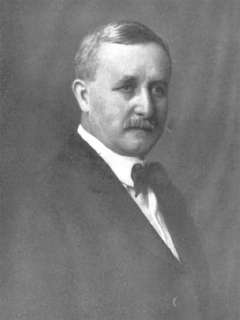

|
On June 24, 1911, in northern Wasatch County, Utah, an ex-convict named Ab Murdock was accosted by Uinta County, Wyoming, Deputy Sheriff Alvin Scruggs, who shot and killed him. Though not present at the scene of the killing, Meeks was traveling with Murdock at the time. Here accounts differ; some say Scruggs was simply a peace officer in pursuit of stock thieves, but others maintain that Murdock was having an affair with Scruggs’s wife and the killing was purely personal.
On June 29, 1911, the Wyoming Times made its own position crystal clear:
“UINTA COUNTY HORSE THIEVES
“Murdock Killed and Meeks is Pursued by Officers
“Uinta County horse thieves met with a warm and fatal reception at Heber City, Utah, on Monday. The outlaws are well known in this county, being residents of the Lyman country. At this point the Utah line divides both states, and horse thieves have been in the habit of running stolen property over the line and then defying the officers. All parties mentioned in the following article, dated Heber City, [Utah], June 25, are well known in this locality. The article follows:
‘His partner, Ab Murdock, dead at the hands of Deputy Sheriff Scruggs of Evanston, Wyo., who shot him at a ranch near Theodore yesterday afternoon when he refused to surrender. Bob [sic] Meeks, an alleged notorious sheep and horse thief who has boasted that he will never be taken alive, is fleeing before an armed posse in the mountains east of here, [Heber City, Utah, the Wasatch County seat], and a battle to the death is momentarily expected. Meeks was present at the killing of Murdock, but escaped by hard riding.’”
In any event, Meeks fled north toward Wyoming. On the slopes of the Uinta Mountains near the Wyoming-Utah line, his horse gave out and he continued as best he could on a peg leg. He encountered a pair of sheep herders, identified by one source as Jock Anson and Jewel Rusha (most likely “Rushia”), who took him in for several weeks. He was carrying a rifle at the time, a single-shot Winchester Model 1885, probably a .45/70, the powerful cartridge used by the U.S. Army from 1873 to 1892. The rifle was effective but heavy, and its recoil was substantial. One of the sheepherders had a nearly-new Model 1894 Winchester lever-action carbine in .25/35, a much lighter rifle with far less recoil, which would have appealed to a man like Meeks, who had suffered a serious shoulder injury. They traded, and Meeks wound up with the Winchester.
By then Bub Meeks had little more than a year to live. His physical and mental health continued to worsen and his family worried that he would fire on peace officers, imagined or real. He was committed to the Wyoming State Hospital for the Insane in Evanston in the summer of 1912, and passed away there on Nov. 22, 1912, age 43. He was buried in Lyman, Wyo., near other Meeks family members.
The carbine recovered by Joe Davenport was donated to the Sweetwater County Historical Museum in 1970 by Margaret Roe, the widow of Dr. T. H. Roe, who served as Mayor of Rock Springs from 1941 to 1945. Davenport’s had retired in 1933 after 14 years in the Rock Springs Police Department. Accounts that he found the rifle on the ground years or even decades after Meeks was bucked off his horse and lost it are completely without credence, as the rifle is in serviceable condition; years of exposure to the weather would have left it severely rusted. The details of just how Davenport came by it may never be known, but for the museum it’s a prize possession: a Wild Bunch Winchester.
The author extends special thanks to the following for their help in his research: Mary Walberg, curator and exhibit designer, Uinta County Museum, Evanston, Wyo; Suzi Taylor, reference archivist, Wyoming State Archives, Cheyenne; Michelle Fuller, Uintah County Regional History Center, Vernal, Utah; Clarica Pinkerton, director, Green River Valley Museum, Big Piney, Wyo.; Floyd Meeks, Worland, Wyo. Joe Hickey, Lonetree, Wyo.
Resources
Primary Sources
- “Bob Meeks Adjudged Insane.” Idaho Daily Statesman, April 22, 1903, p. 3.
- “Bud Meeks to Asylum.” Bridger Valley Enterprise, Aug. 13, 1912, p. 5.
- “Daring Robbery.” The Montpelier Examiner, Aug. 15, 1896, p. 1.
- Hickey, Joe. Personal communication, September, 2021.
- Idaho State Penitentiary Daily Record, Boise, Idaho, Dec. 24, 1901.
- “Meeks Taken to the Pen.” The Rawlins Republican, Sept. 10, 1897, p. 1.
- Meeks, Floyd. Personal communication, September, 2021.
- “Robbed at Bridger.” The Sheridan Post, June 24, 1897, p. 8.
- “Trial of Bob Meeks.” The Wyoming Press, Sept. 4, 1897, p. 1.
- “Uinta County Horse Thieves.” The Wyoming Times, June 29, 1911, p. 1.
- “Whereabouts of Bob Meeks is Discovered.” The Weekly Boomerang, Oct. 22, 1903, p. 1.
Secondary Sources
- Betenson, Bill. "Bub Meeks: The Unfortunate Outlaw." Outlaw Trail Journal, Summer 2003. Uintah County History Regional History Center, Vernal, Utah.
- ____________. Butch Cassidy, The Wyoming Years. Glendo, Wyo.: High Plains Press, 2020.
- Boren, Kerry Ross, and Lisa Lee Boren. Butch Cassidy, the Untold Story. K&L Boren Partnership, 2010.
- Frye, Elnora L. Atlas of Wyoming Outlaws at the Territorial Penitentiary. Laramie, Wyo.: Jelm Mountain Publications, 1990.
- Kelly, Charles. The Outlaw Trail, a History of Butch Cassidy and his Wild Bunch. New York: Bonanza Books, 1959.
- Patterson, Richard. Butch Cassidy, a Biography. Lincoln, Neb.: University of Nebraska Press, 1998.
- The author extends special thanks to the following for their help in his research: Mary Walberg, curator and exhibit designer, Uinta County Museum, Evanston, Wyo; Suzi Taylor, reference archivist, Wyoming State Archives, Cheyenne; Michelle Fuller, Uintah County Regional History Center, Vernal, Utah; Clarica Pinkerton, director, Green River Valley Museum, Big Piney, Wyo.; Floyd Meeks, Worland, Wyo. Joe Hickey, Lonetree, Wyo.
Illustrations
- The photo of Matt Warner is from True West Magazine. Used with thanks.
- The photo of Judge Standrod is from Geni. Used with thanks.
- The photo of Bub Meeks in prison stripes is from the Idaho State Archives. Used with thanks.
- The horseback photo of Joe Davenport and two associates—they are Vernal, Utah, Town Marshal Joe Toliver, and a man identified as Fonce Sparks—is originally from the Uintah (Utah) County Library. Used with thanks.
- The photograph of Elzy Lay is from the Utah State Historical Society.
- The rest of the photos are from the collections of the Sweetwater County Historical Museum. Used with permission and thanks.
- The neckerchief photo of Bub Meeks is from the American Heritage Center at the University of Wyoming. Used with permission and thanks.
- The photo of the Oregon Boot is from Oregon State Archives. Used with thanks.
- The mug shots of Butch Cassidy, Will Meeks and Henry Lea are from Wyoming State Archives. Used with permission and thanks.
